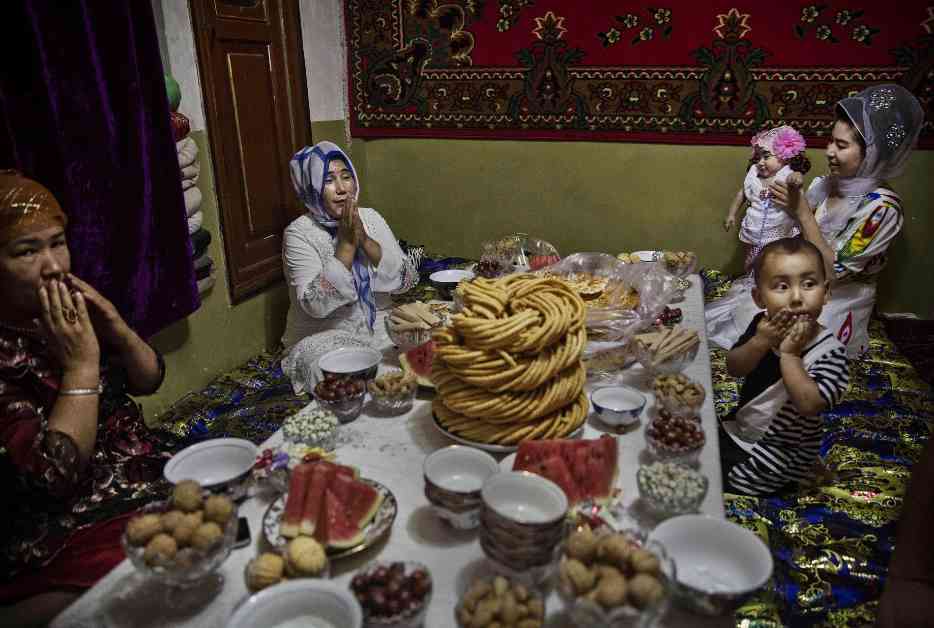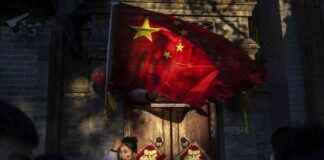Preserving Uyghur Cuisine: A Culinary Exploration of Beijing’s Erasure Efforts
On a crisp November morning in 2018, a unique lesson unfolded not in a traditional classroom, but in a makeshift kitchen as part of Xinjiang’s innovative “household school” program. Adult women gathered as a teacher posed a simple yet revealing question: “What do you like to eat for breakfast?” The unanimous response — “nan and milk” or “nan and tea” — hinted at the culinary traditions deeply rooted in the Uyghur community.
However, the teacher’s subsequent inquiry about hot congee sparked a lively discussion and curiosity among the attendees. Through hands-on tutorials, the women were introduced to new breakfast dishes like fried dough sticks (youtiao), congee, onion pancakes, and steamed buns. Reflecting on the workshop, one participant expressed her newfound culinary skills and the positive impact on her family’s breakfast routine.
This report sheds light on the Chinese Communist Party’s (CCP) approach to Uyghur culture, particularly their culinary traditions. The CCP perceives aspects of Uyghur life as “backward” and endeavors to reshape Uyghur cultural expression to align with its vision of modernity and normalcy. In the realm of food, Beijing often intervenes directly with local women to promote a set of officially sanctioned “Han” tastes and habits as the standard for hygiene and modernity.
The CCP’s stance on Uyghur cuisine is evident in its efforts to replace Uyghur culinary practices with a more standardized and sanitized version of “Xinjiang food.” Officials view ethno-cultural diets, especially those shaped by Islamic law, as potential barriers to ethnic unity or even avenues to extremism. This perspective is exemplified by Mijit Qadir, a Public Security Bureau official, who links Muslim halal customs to a perceived gap between Uyghur and Han people.
Despite the CCP’s attempts to downplay Uyghur cuisine, the diversity and richness of Uyghur culinary traditions remain a cornerstone of the region’s cultural identity. From dough-covered stews to tomato-broth längmän noodles, Uyghur cuisine encompasses a wide array of dishes reflecting the diverse communities inhabiting Xinjiang. Common ingredients such as wheat, rice, maize, halal meat, and aromatic spices give rise to a myriad of flatbreads, pilafs, dumplings, kebabs, and soups that are cherished both domestically and abroad for their intricate preparations and nutritional benefits.
However, the political landscape in Xinjiang has evolved drastically in recent years, with the CCP shifting its narrative on Uyghur cuisine. Instead of celebrating the nutritional and medicinal value of Uyghur dishes, Beijing now promotes the introduction of “Chinese cuisine” into Uyghur communities as part of its comprehensive “stability work.” Alongside repressive measures, such as mass incarceration and religious repression, the CCP is actively reshaping Uyghur culture through paternalistic educational efforts and cultural interventions.
The All-China Women’s Federation plays a pivotal role in executing the CCP’s agenda to transform Uyghur women into modern, “civilized” citizens. Through initiatives like the “Becoming Family” campaign and “household school” workshops, the Federation aims to instill new dietary habits and lifestyle choices among Uyghur women. Cooking classes are central to these efforts, providing instruction on preparing “healthy” and “modern” Chinese-style meals to replace what is perceived as traditional and monotonous Uyghur dishes.
The concept of “household schools” serves as a platform for the dissemination of Han-inspired culinary practices among Uyghur women. These intensive workshops not only teach cooking techniques but also impart policy lectures aimed at promoting a shift towards a more “civilized” way of living. By encouraging the preparation of Chinese dishes, the CCP seeks to create a cultural shift that aligns with its vision of modernity and unity.
Despite the government’s efforts to promote “Chinese cuisine” in Xinjiang, Uyghur culinary traditions continue to hold significance for the local community. The intricate preparations, diverse flavors, and nutritional benefits of Uyghur dishes remain deeply ingrained in the region’s cultural heritage. While the CCP may seek to erase or marginalize these traditions, the resilience of Uyghur cuisine perseveres as a symbol of cultural identity and resistance against cultural erasure.
The ongoing push to replace Uyghur cuisine with a more standardized version of “Chinese food” underscores the broader issue of cultural appropriation and colonial dynamics at play in Xinjiang. By devaluing Uyghur food systems and promoting a homogenized culinary identity, the CCP seeks to further its agenda of assimilation and control over the region’s diverse cultural landscape.
In conclusion, the preservation of Uyghur cuisine serves as a critical battleground in the struggle for cultural autonomy and identity in Xinjiang. As the CCP continues its efforts to reshape Uyghur cultural expression, the resilience of Uyghur culinary traditions stands as a testament to the enduring spirit of a community determined to preserve its heritage in the face of erasure efforts.

















